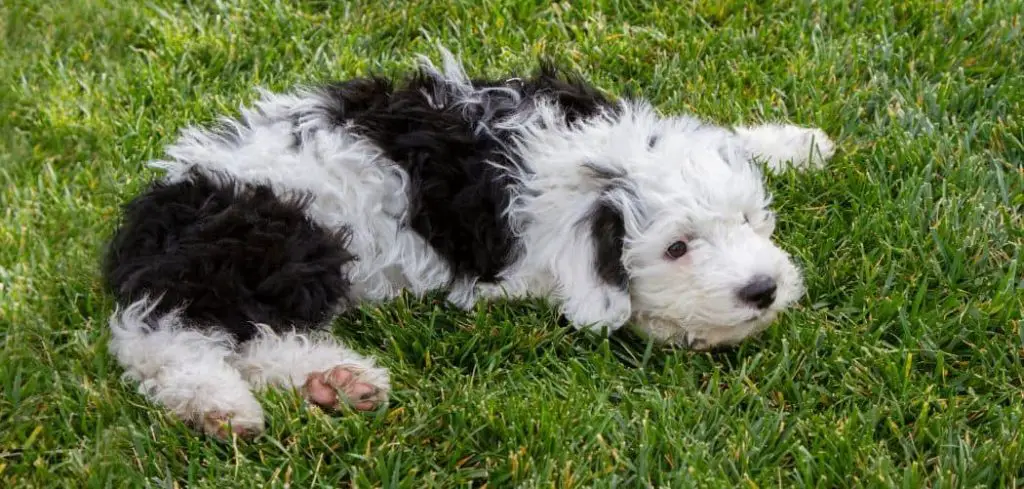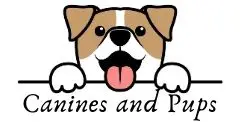If you’ve ever noticed your dog eating grass and then throwing up yellow foam, you’re not alone. This behavior can be puzzling and concerning for dog owners.
Many dogs occasionally eat grass, and sometimes this is followed by vomiting yellow foam or bile.
But why does this happen? Is it harmful? And what should you do if you notice these signs?
We outline why dogs eat grass and throw up yellow foam, the possible causes behind this behavior, and when you should seek veterinary care.
Table of Contents
Dog Eating Grass and Throwing Up Yellow Foam: Here’s Why It Happens
When a dog eats grass and throws up yellow foam, it’s often a sign of an upset stomach or excess bile in an empty stomach. The yellow foam is typically bile, a digestive fluid that can irritate the stomach lining if the dog hasn’t eaten.
Grass may be ingested instinctively to induce vomiting and relieve nausea.
While this behavior is common and not always serious, frequent episodes may indicate gastrointestinal issues, dietary imbalances, or other underlying health concerns

Why Do Dogs Eat Grass?
1. Natural Instinct and Ancestral Behavior
Eating grass is believed to be an instinctive behavior inherited from wild ancestors.
Wild canines often eat plants and grasses to aid digestion or to help purge their digestive tract of parasites or irritants.
2. Upset Stomach or Nausea
Many dogs eat grass when they feel nauseous or have an upset stomach.
Grass can irritate the stomach lining, causing vomiting, which may help relieve whatever discomfort the dog is feeling.
This is why grass eating often precedes vomiting yellow foam.
3. Dietary Deficiency
Some experts suggest dogs eat grass to compensate for a lack of fiber or certain nutrients in their diet.
If your dog’s food isn’t balanced or lacks enough fiber, they might instinctively munch on grass to try to fill the gap.
4. Boredom or Anxiety
Sometimes dogs eat grass simply because they are bored or anxious.
Grass chewing can become a repetitive behavior to relieve stress or occupy themselves.
5. Taste and Texture
Some dogs may just enjoy the taste or texture of grass.
It could be a harmless habit without any underlying health concerns.
Common Reasons for Dogs Throw Up Yellow Foam
1. Empty Stomach and Bile Reflux
One of the most common reasons dogs throw up yellow foam is because their stomach is empty for too long.
The bile that accumulates in the stomach irritates the lining, causing the dog to vomit.
This condition is sometimes called “bile reflux gastritis.”
2. Gastrointestinal Irritation
Eating grass can irritate a dog’s stomach lining, especially if the grass is coated in pesticides, fertilizers, or chemicals.
This irritation may trigger vomiting of yellow foam as a response to inflammation.
Related: Dog eating grass and licking floor (Explained)
3. Acid Reflux
Like humans, dogs can experience acid reflux, where stomach acid flows back up into the esophagus.
This can cause discomfort and vomiting of yellowish foam.
4. Intestinal Parasites or Infections
Parasites or infections affecting the gastrointestinal tract can cause nausea and vomiting bile.
If your dog frequently vomits yellow foam and eats grass, it could be a sign of an underlying infection.
5. Dietary Indiscretion or Food Intolerance
If your dog eats something inappropriate or their diet changes suddenly, it can upset their stomach and cause vomiting.
Eating grass may be a way to induce vomiting to clear the stomach of irritants.
Related: Dog eating grass and pooping blood (Explained)
What Causes Dogs to Vomit Yellow Foam After Eating Grass?
Grass as a Vomit Inducer
Dogs may eat grass deliberately to make themselves vomit.
The rough texture of grass blades can irritate the stomach lining and trigger vomiting.
This helps dogs remove whatever is upsetting their stomach, including hairballs, toxins, or indigestible materials.
Dietary Imbalances or Hunger
If a dog’s stomach is empty or their diet is insufficient in fiber, they may resort to eating grass to stimulate vomiting or to get some roughage in their system.
Vomiting yellow foam typically happens on an empty stomach, which explains why many dogs vomit yellow foam in the morning before breakfast.
Exposure to Toxins or Irritants
Eating grass coated with pesticides or chemicals can irritate a dog’s digestive tract, causing vomiting yellow foam.
When Is Eating Grass and Throwing Up Yellow Foam Normal?
In many cases, dogs eating grass and throwing up yellow foam is normal and not a cause for alarm.
Occasional vomiting of yellow foam after eating grass may simply be your dog’s way of coping with a minor stomach upset or boredom.
If your dog eats grass and vomits yellow foam once in a while but remains otherwise healthy, active, and eating normally, you usually do not need to worry.
When Should You Be Concerned?
While this behavior can be normal, it can also indicate more serious issues if it happens frequently or is accompanied by other symptoms.
Here are signs that you should take seriously:
Frequent vomiting: If your dog throws up yellow foam or bile regularly, this could be a sign of chronic stomach irritation or illness.
Lethargy or weakness: If your dog is tired or less active, it may indicate dehydration or illness.
Loss of appetite: Refusal to eat or drink along with vomiting should be evaluated by a vet.
Diarrhea or blood in vomit: These are signs of serious digestive problems.
Weight loss: Sudden or severe weight loss is concerning.
Signs of pain or discomfort: Whining, pacing, or abdominal tenderness are red flags.
Behavior changes: Excessive drooling, pacing, or restlessness may signal nausea or distress.
If you observe these signs alongside grass eating and vomiting yellow foam, it’s essential to seek veterinary care promptly.
How to Help Your Dog
1. Monitor Their Behavior and Symptoms
Keep an eye on how often your dog eats grass and vomits yellow foam.
Note if they show other symptoms such as diarrhea, lethargy, or loss of appetite.
2. Adjust Feeding Schedule
Feeding your dog smaller, more frequent meals can help prevent an empty stomach, which often causes bile vomiting.
Avoid long gaps between meals.
3. Provide a Balanced Diet
Ensure your dog’s diet is nutritionally complete and contains enough fiber.
Sometimes, adding fiber supplements or switching to high-quality dog food can reduce grass eating.
4. Discourage Grass Eating in Unsafe Areas
Prevent your dog from eating grass treated with fertilizers, pesticides, or harmful chemicals by supervising outdoor time or using safe dog-friendly grass patches.
5. Manage Stress and Boredom
Provide plenty of mental stimulation, exercise, and interactive toys to reduce boredom and anxiety that may cause grass eating.
6. Keep Your Dog Hydrated
Vomiting can lead to dehydration, so ensure your dog always has access to fresh water.
7. Consult Your Veterinarian
If your dog frequently eats grass and vomits yellow foam, or shows any concerning symptoms, schedule a vet visit for a thorough examination.
Your vet can rule out infections, parasites, allergies, or other underlying health issues.
When to See a Vet
Immediate veterinary care is recommended if:
Vomiting is persistent or severe
Vomit contains blood or looks like coffee grounds
Your dog shows signs of dehydration (sunken eyes, dry gums)
There are neurological symptoms such as unsteadiness or seizures
Your dog is a puppy, senior, or has a chronic health condition
Your vet may perform diagnostic tests including blood work, stool analysis, or imaging to identify the cause of vomiting and grass eating.
Key Takeaway
Eating grass and throwing up yellow foam in dogs is a common behavior that can be normal, especially if it happens occasionally.
It’s often a natural way for dogs to soothe an upset stomach, stimulate vomiting, or deal with boredom.
However, frequent vomiting of yellow foam, especially when combined with other symptoms like lethargy, diarrhea, or loss of appetite, can signal underlying health problems such as gastrointestinal irritation, infections, or dietary issues.
By monitoring your dog’s symptoms, providing a balanced diet, and seeking veterinary advice when necessary, you can help your furry friend stay healthy and comfortable.
